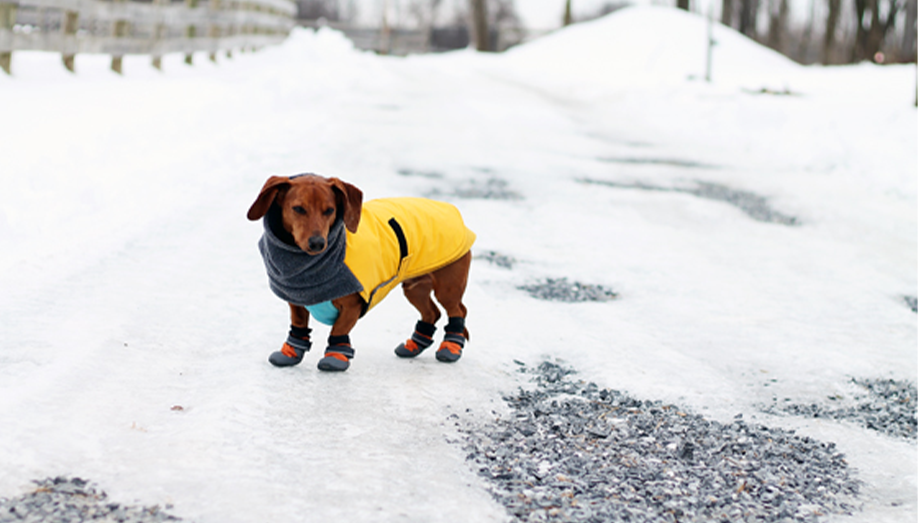
Dog Paw Protection in the Winter
With the winter season on the way, protecting your dog’s paws is important to think about. Big and small, paw pads are going to be exposed to the freezing, inclement weather. Aside from the instant shock of stepping paw into the freezing cold, the after-effects can be a nuisance to our pets. There are ways we can provide dog paw protection before and after taking them for a quick potty break, or a little stroll.
Dog Paw Protection Before Venturing Outdoors:
- Be mindful of the time. Puppy paws are susceptible to frostbite and hypothermia just like humans. Symptoms of hypothermia include shivering, anxiety and moving slowly. Most healthy medium or large dogs can walk for 30-minutes if the temperature is above 20 degrees F. Smaller dogs should limit the walk to 15 or 20 minutes if temps are between 20 to 32 degrees F. If it’s below 0 degrees, no dog should be out for a walk.
- Consider booties that have traction if you are taking them into the snow. This will provide dog paw protection and help them from slipping and sustaining a secondary injury. Boots also provide a barrier of protection by preventing contact with de-icing solutions and keep their feet dry.
- Foot wax is another option. Before applying, Caesar Chavez recommends taking the steps to ensure your pup’s hair between the paw pads is short and even with the pad. You can do so by using a clipper or scissors. “This will help prevent ice balls from forming between and around the paw pads which can be painful and result in trauma”, Chavez states. If you do not have foot wax, petroleum jelly works just as well.
- Be cautious of ice patches. These can have sharp edges and cause injury to your pets’ paw pads. Also, sharp objects can be hidden under snow, therefore carry a towel with you while outdoors with your canine in case of injury.
Dog Paw Protection After Returning From Outdoors:
- Examine your pets’ paws and pads. Wipe paws off to remove all salt, dirt, and ice. The chemicals found in de-icing agents can be toxic to dogs. Keep your canine away from streets and sidewalks that have been heavily treated. There are agents available for personal use on your own driveway and sidewalk that are safe for dogs.
- Clean your pup’s paws after returning inside. Thoroughly remove any chemicals (especially salt), ice, or snow and apply another layer of balm to soothe any irritation. This is the best way to avoid drying and cracking paw pads.
- Observe your pet’s behavior. To assure that your pup is not experiencing hypothermia, pay attention to their demeanor and confirm that they are acting as they would normally.
Remember, if it is too cold for you outside, it is too cold for your fur baby.
Members can browse Wigglepon and search for items to protect your pet’s coat and paws during the winter months. If you suspect your pet has suffered from frostbite, hypothermia or injury, save yourself a trip to the veterinarian and use your Pin Paws Plus or Pin Paws Pet Care membership to contact whiskerDocs and receive veterinary advice via call, text or chat 24/7.